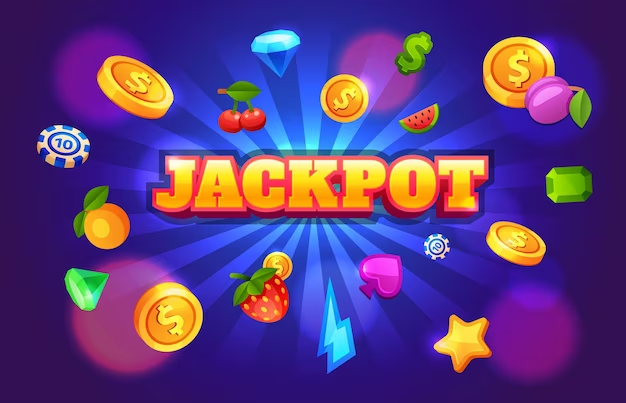Overview of Flag Chart Pattern
The flag chart pattern is a technical analysis tool used by traders to identify potential market trends. This pattern typically forms after a strong price movement and resembles a flag on a pole, hence its name. The flag pattern is characterized by a brief period of consolidation, where the price moves in a sideways or slightly downward direction before resuming its previous trend.
Traders often use flag patterns to anticipate future price movements and plan their trading strategies accordingly. By understanding the formation of flag patterns and the psychology behind them, traders can make informed decisions about when to enter or exit trades. Recognizing these patterns early on can provide valuable insight into market sentiment and help traders effectively manage their risk and reward ratios.
Indian trading app is a must-have tool for traders looking to stay ahead of the game in the fast-paced world of stock trading. With the Indian trading app, traders can easily access real-time market data, track their portfolios, and execute trades on the go. Whether you are a seasoned trader or just starting out, this app offers a user-friendly interface and a wide range of features to help you make informed decisions. Download the indian trading app today and take your trading to the next level.
Understanding the Formation of Flag Patterns
Flag patterns are technical analysis tools used by traders to identify potential continuation patterns in the financial markets. The formation of a flag pattern typically occurs after a strong price movement, known as the flagpole, followed by a period of consolidation represented by a rectangular or a parallelogram-shaped pattern. This consolidation phase indicates a temporary pause in the market trend before a potential breakout in the direction of the initial price movement.
During the formation of a flag pattern, traders observe decreasing trading volume, signaling a decrease in market volatility and indecision among market participants. As the price range narrows within the flag pattern, it reflects a period of market stabilization and accumulation of positions by traders. The duration of the flag pattern can vary, with shorter flags indicating a quick continuation of the trend, while longer flags may suggest a more significant price movement ahead. Understanding these key characteristics of flag patterns is essential for traders to effectively spot potential trading opportunities in the financial markets.
Identifying Bullish Flag Patterns
Bullish flag patterns are continuation patterns that occur after a strong upward price movement. These patterns are characterized by a sharp, vertical price rise, followed by a consolidation period where the price moves in a sideways or downward direction. During this consolidation phase, the price forms a rectangular shape, resembling a flag, hence the name “bullish flag pattern.”
To identify a bullish flag pattern, look for a strong, sharp upward trend followed by a period of consolidation with declining trading volume. The flag portion of the pattern should be sloping downward slightly, forming a channel parallel to the initial upward trend. This consolidation phase typically lasts for a short period before the price breaks out to the upside, signaling a potential continuation of the previous upward trend. It’s essential to wait for confirmation of the breakout before entering a trade to reduce the risk of false signals.
Options trading is a popular strategy for traders looking to capitalize on bullish flag patterns in the market. When identifying a bullish flag pattern, traders should look for a strong upward trend followed by a consolidation phase with declining trading volume. By recognizing the rectangular shape forming during this consolidation period, traders can anticipate a potential breakout to the upside. Utilizing options trading strategies can help traders take advantage of these patterns and maximize their profits. For a user-friendly options trading platform, check out options trading app.
Spotting Bearish Flag Patterns
Bearish flag patterns are characterized by a sharp price decline, known as the flagpole, followed by a consolidation period in the form of a rectangular flag shape. This consolidation phase typically displays a downward sloping trend channel with lower highs and lower lows, indicating a potential continuation of the prior downtrend. Traders often look for this pattern as a signal of further bearish price movement in the near future.
In order to confirm a bearish flag pattern, it is essential to observe declining trading volume during the consolidation period. This decrease in volume signifies a diminishing interest from market participants and supports the notion that the price may be gearing up for another leg down. Traders may consider entering short positions or adding to existing ones when the price breaks below the lower trendline of the flag pattern, signaling a potential downtrend continuation.
Entry and Exit Points for Trading Flag Patterns
For traders utilizing flag patterns, entry and exit points hold significant importance in maximizing profit potential and minimizing losses. An opportune moment to enter a trade when a bullish flag pattern is confirmed is upon the breakout above the upper trendline of the flag. This breakout signals a potential upward continuation of the previous bullish trend. On the other hand, traders looking to enter a bearish flag pattern trade may consider initiating a short position once the price breaks below the lower trendline of the flag, indicating a possible continuation of the existing downtrend.
Knowing when to exit a trade is equally crucial in trading flag patterns. Traders may consider exiting a long position in a bullish flag pattern trade at the point where the price reaches the target projected by the flag’s pole length. Alternatively, a trader might choose to exit a trade if the price fails to sustain the breakout and starts to move in the opposite direction. Likewise, for bearish flag patterns, exiting a short trade at the level that corresponds to the projected target based on the flagpole’s length or if the price reverses from the breakout point could be a suitable strategy.
HDFC Sky by HDFC Securities provides traders with the necessary tools and resources to identify entry and exit points for trading flag patterns. By utilizing their platform, traders can easily spot bullish and bearish flag patterns and make informed decisions on when to enter and exit trades. With HDFC Sky by HDFC Securities, traders can take advantage of breakout opportunities above the upper trendline for bullish flags and below the lower trendline for bearish flags. Additionally, traders can use the platform to set price targets based on the flagpole’s length and exit trades accordingly. Explore HDFC Sky by HDFC Securities to enhance your trading strategy and maximize your profit potential.
Setting Stop Loss and Take Profit Levels
For setting stop loss levels when trading flag patterns, it is crucial to place them below the lower trendline of a bullish flag pattern or above the upper trendline of a bearish flag pattern. This level acts as a safety net by helping traders minimize potential losses if the trade goes against their initial prediction. Moreover, stop loss levels should be set based on the overall market volatility and the distance between the flag’s high and low points.
In contrast, determining take profit levels involves identifying a target price that aligns with the distance between the flag’s pole and the start of the flag pattern. This level represents the potential price move that traders anticipate based on the pattern’s formation. Additionally, traders can consider using additional technical indicators or support and resistance levels to confirm their take profit targets and potentially capture the maximum profit from the trade.
Using Technical Indicators with Flag Patterns
When it comes to using technical indicators with flag patterns, traders often rely on tools such as moving averages, relative strength index (RSI), and MACD to confirm their trading decisions. These indicators can provide additional insights into the strength of the flag pattern and help traders determine the best entry and exit points. For example, a moving average crossover combined with a bullish flag pattern could signal a strong buying opportunity, while a bearish divergence in the RSI alongside a bearish flag pattern might indicate a potential downturn.
Incorporating technical indicators into the analysis of flag patterns can enhance the confidence of traders in their trading strategies. By using a combination of indicators that complement each other, traders can build a more robust trading plan and increase the likelihood of making successful trades. It is important to remember that no single indicator can guarantee a profitable trade, but when used in conjunction with flag patterns, technical indicators can provide valuable insights into market dynamics.
Managing Risk and Reward Ratio
To effectively manage risk and reward ratio when trading flag patterns, it is essential to set clear stop loss and take profit levels. Stop loss orders should be placed below the flag pattern’s support level in bullish flags and above the resistance level in bearish flags to limit potential losses. On the other hand, take profit levels can be set based on the length of the flagpole, offering a favorable risk-reward ratio for the trade.
Furthermore, traders should consider adjusting their position size based on their risk tolerance and the distance between the entry point and the stop loss level. By calculating the risk per trade as a percentage of the total trading capital, traders can ensure that each trade aligns with their overall risk management strategy. This approach helps in optimizing the risk-reward ratio and maintaining discipline in trading flag patterns.
When it comes to managing risk and reward ratio in trading flag patterns, having access to the best stock market app can make all the difference. With the best stock market app, traders can stay informed about market trends, set clear stop loss and take profit levels, and adjust their position size accordingly. By utilizing the features of the app, traders can optimize their risk-reward ratio and make informed decisions when trading flag patterns.
Tips for Successful Trading with Flag Patterns
When trading flag patterns, it is essential to be patient and wait for the pattern to fully form before entering a trade. Rushing into a position prematurely can lead to losses and missed opportunities. Additionally, it is important to combine flag patterns with other technical analysis tools to confirm the potential trend reversal or continuation. By using multiple indicators, traders can increase the probability of successful trades.
Another crucial tip for trading flag patterns is to practice proper risk management. This includes setting stop-loss orders to limit potential losses and trailing stop orders to secure profits as the trade moves in favor. It is also recommended to avoid overleveraging positions when trading flag patterns, as this can increase the risk of significant losses. By following sound risk management practices, traders can protect their capital and ensure long-term success in trading flag patterns.
Real-Life Examples of Trading Flag Patterns
Real-Life Examples of Trading Flag Patterns:
In a recent market scenario, a bullish flag pattern emerged on the price chart of a leading tech stock. The stock had experienced a strong bullish move followed by a period of consolidation where the price formed a rectangular shape, resembling a flag. Traders identified this pattern as a potential bullish continuation signal and entered long positions once the price broke out above the flag formation.
Similarly, a bearish flag pattern was observed on the daily chart of a popular cryptocurrency. After a steep downtrend, the price of the cryptocurrency entered a brief consolidation phase, forming a downsloping flag pattern. Traders who recognized this pattern as a potential bearish continuation signal shorted the cryptocurrency when the price broke below the lower trendline of the flag. This resulted in profitable trading opportunities for those who acted on the bearish flag pattern signal.



